House centipedes have a scary look due to their slender body and numerous spiky-looking legs. If spotted, they can run up walls and flee behind furniture for a safe shelter to hide. Their speed can be alarming, and the way they move can certainly startle. Fortunately, there are several effective methods to get rid of them.
How to get rid of house centipedes naturally? Sticky traps are a well-known way of getting rid of house centipedes. They are also known to be killed by boric acid and diatomaceous earth, as well as a homemade spray consisting of water and dish detergent. Cayenne pepper and essential oils such as cedar, tea tree, and peppermint are also effective.
House centipedes are frightening to look at, and they’re much scarier when they move. They’re a common pest that can get into the house. It is beneficial to learn more about them and know how to properly eliminate them.
This article goes over the characteristics and behaviors of house centipedes, as well as why they are in the house, what’s their purpose, and how to get rid of them.
What Does a Household Centipede Look Like?
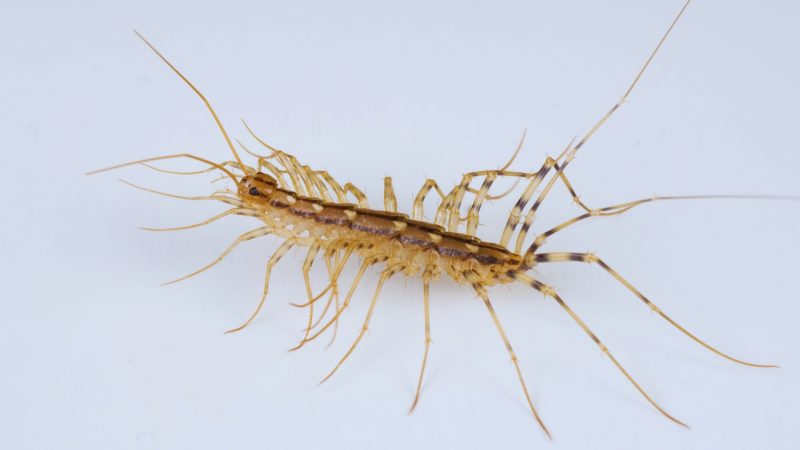
House centipedes have long and flat segmented bodies with two pairs of legs on each segment. Their body length is usually between 1 to 1.5 inches.
Additionally, they have 15 pairs of spiky legs. House centipedes are normally yellowish to dark brown in color with darker stripes or markings on their body. They have a pair of long antennas on their head covered with tiny hairs.
Where Do House Centipedes Come From?
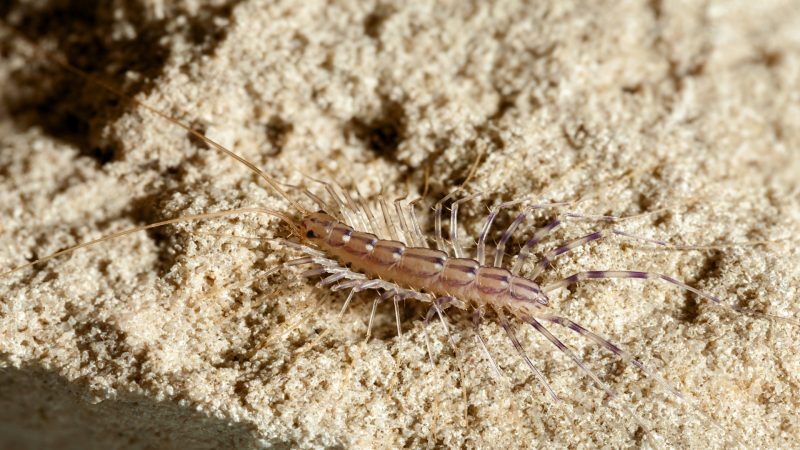
House centipedes can be found in almost every country on the planet. They are usually found in damp environments. Outside the house, they hide under trees, loose barks, decaying logs, wet soils under rocks, garbage bins, and piles of moist leaves and grass.
Should You Kill House Centipedes?
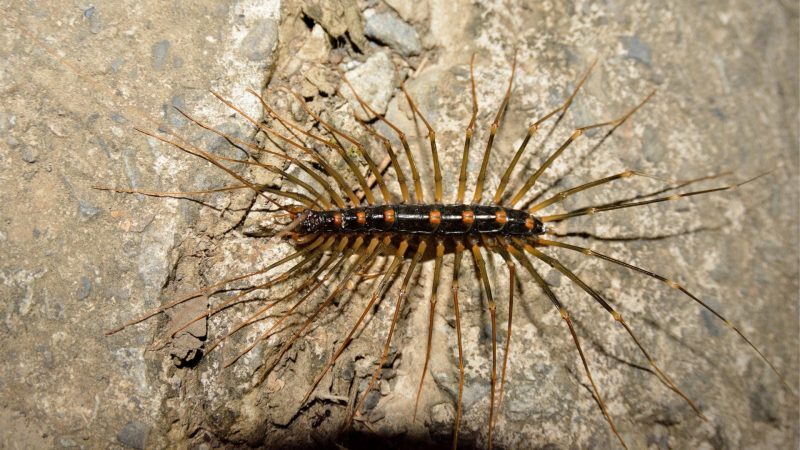
There are multiple ways to get rid of house centipedes. Killing them can be an option, but there are reasons why you shouldn’t kill house centipedes. Although they are considered a pest in the home, they are deemed harmless to people and do not pose damage to house materials or structures.
House centipedes eat other pests and insects that are commonly found inside homes, such as flies, ants, bugs, moths, silverfish, spiders, and cockroaches. Having them can be a great way to get rid of other pests for free.
Additionally, house centipedes don’t have the capacity to damage things and properties. Before deciding to kill house centipedes, consider the benefit you can get if you keep them alive.
What Attracts Centipedes?
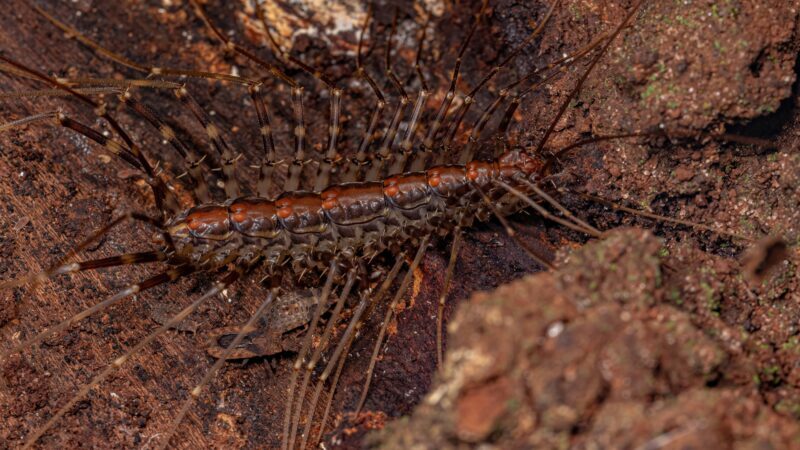
A House centipede is attracted to moisture and food. To survive, they require constant food and water sources.
Because they lack a particular moisture-retaining cuticle, they require a regular source of moisture to survive; otherwise, they will dry out and die. As a result, they’re commonly found in damp areas of the house, such as the kitchen, sinks, bathrooms, and basements with wet areas.
Additionally, they eat spiders, cockroaches, moths, crickets, earthworms, bed bugs, silverfish, mites, flies, and other smaller insects and arthropods. These species that they feed on are commonly found inside houses and are also considered pesky pests.
What Eats Centipede?
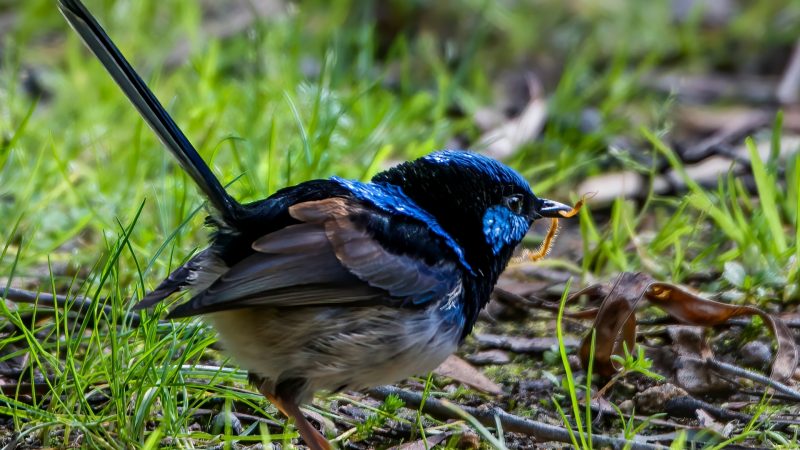
As centipedes prey on other insects, they also have their own predators that they are afraid of. Salamanders, frogs, toads, beavers, geckos, birds, and chickens are among the predators that feed on centipedes. Small centipedes are also eaten by larger spiders and ground beetles.
Are House Centipedes Dangerous?
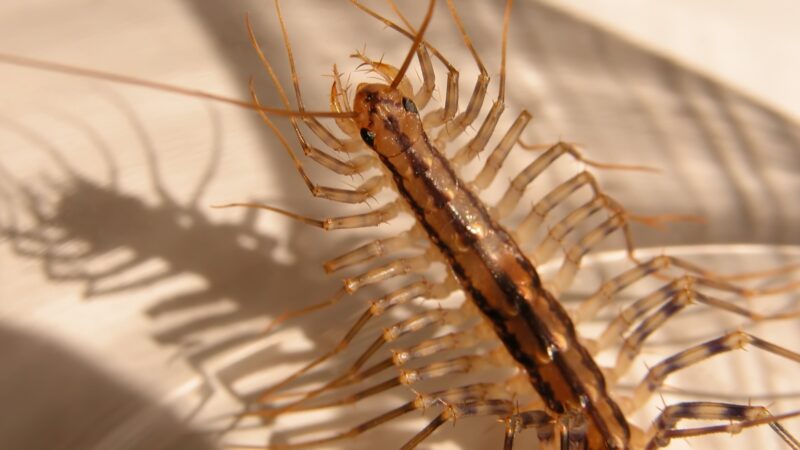
House centipedes are not considered dangerous and do not pose any real threat to people and the household. They can’t cause severe damage to humans or pets, and they are not capable of causing property damage.
Additionally, they don’t need to create nests and webs to live, and they won’t cause havoc in areas where they hide. Although house centipedes have a mouth to bite, they prefer to escape and hide if they come across threats such as humans or pets.
Do House Centipedes Bite?
House centipedes are not aggressive to humans. They don’t initially bite and attack. When they are threatened or trapped, they tend to bite in self-defense. House centipedes have two mouths and carry venom to hunt and paralyze their prey.
However, it is very rare for house centipedes to use the same method to bite humans. Human symptoms of house centipede bites are usually moderate and insignificant.
Related: Do Centipedes Bite Humans and Are They Poisonous? | Information and Facts
What Causes Centipedes in the House?
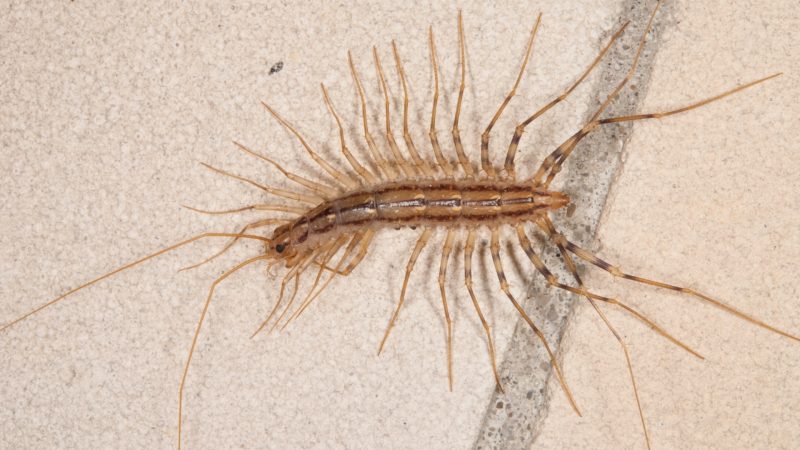
House centipedes are attracted to moist environments since they need a constant source of moisture to survive. They seek shelter in damp areas of houses.
Additionally, they feed on cockroaches, mites, spiders, and flies that are usually found inside houses they are infesting. It’s possible that spotting house centipedes in the house means there are more other insects in the house.
House centipedes gain access to a home through holes, cracks, and gaps in the foundation of the house. They may also enter the house by crawling through drains and pipes, as well as holes between doorframes and beneath doors.
Will House Centipedes Crawl in Your Bed?
House centipedes can crawl to beds if they sense food in the area. A possible scenario where centipedes crawl into bed is to hunt insects such as bed bugs or fleas infesting your bed. They’ve come to hunt other insects, not to attack people who are asleep.
How to Keep Centipedes Out of Your House?
Reducing moisture within the house and ensuring that no unattended water is available can help keep house centipedes at bay. This is because they need constant access to water and moisture to survive. Checking and repairing water leakage on pipes and drains can help.
Sealing holes and gaps in areas where centipedes and other insects could enter the house is a great approach to keep them and other insects out of the house.
How to Get Rid of House Centipedes Naturally?
1. Seal any holes, gaps and cracks
Our home is vulnerable to centipede invasion due to tiny holes between the walls. To keep exterior centipedes or other pests out, inspect the walls, doors, and every other area of the house for any gaps, holes, or cracks and seal them. This will lessen the possibility of centipedes entering our home and crawling inside.
2. Keep the inside and the outside of your house clean
Make sure your home is always neat and tidy, inside and out. Make careful to remove all the mounds of dead leaves and tree bark from around landed homes. Remember that centipedes prefer wet, gloomy environments.
Remember to inspect the drains for obstructions. This location could potentially draw centipedes if ignored.
3. Sprinkle salt
In addition to using it for cooking, salt is a fantastic all-natural centipede deterrent. In addition to providing some remedial control, sprinkling salt around damp spots or wall cracks will prevent them from getting into your home.
If you have pets, you might add some salt to the water bowls surrounding them. But watch out for your dogs eating the salt!
4. Repel with pandan leaves
You may fight centipedes with pandan leaves for a more organic method. Although pandan leaves smell wonderful to humans, centipedes do not. Centipedes and other pests can be scared off by the aroma that emanates from pandan leaves.
Slice some pandan leaves and put them into clean containers. Place these containers in infested areas.
5. Place mothballs around the house
Place some mothballs, also known as naphthalene balls, about the regions that are infested. Naphthalene gas produced by mothballs is poisonous to centipedes. As a result, there will be fewer centipedes in your house.
6. Sticky Traps
Sticky traps are an effective technique for eradicating pests from your home. In addition to catching and killing centipedes, the traps are a great way to keep track of a centipede infestation.
7. Using Diatomaceous Earth
An organic powder called diatomaceous earth, or DE, functions as a mechanical pesticide. The powder, which adheres to the insects’ exoskeletons and causes minor body abrasions as they move through it, causes the cuts.
Spread a coating of food-grade diatomaceous earth around the exterior of your home in places where centipedes are frequently seen or as one of the simplest DIY solutions to get rid of roaches and silverfish that might get inside.
How to Kill Centipedes Instantly?
House centipedes are extremely fragile and can be killed instantly. To get rid of them naturally, you can do the following:
- Use sticky traps .
- READY TO USE: Centipede and Insect glue traps are pre-scented and...
- YEAR-ROUND PROTECTION: Catchmaster glue traps are safe, non-toxic...
- HOME & FAMILY SAFE: Designed to help you keep your family...
- TOTAL COVERAGE: The indoor bug catcher can be used in...
- INTELLIGENT PEST MANAGEMENT: At our core, we are dedicated pest...
- Make use of commercial insecticides .
- One application controls insects for up to 3 months
- Treats an average 2,000-square-foot home more than twice
- Apply around home's foundation
- People and pets may re-enter area after product is watered in and...
- Kills ants, spiders, centipedes and other listing, home-invading...
- Use boric acid and diatomaceous earth to be applied to potential centipede passages.
- BORIC ACID: Boric acid, also known as boracic acid or orthoboric...
- MULTIPURPOSE CLEANING: Versatile in nature, this fine powder is a...
- INDUSTRIAL GRADE: With its industrial-grade strength, our Boric...
- LAUNDRY USAGE: Elevate your laundry game by incorporating this...
- DEODORIZING POWER: Experience the deodorizing capabilities of our...
- A homemade spray with water mixed with dish soap is effective.
- Use natural repellent. You can use cayenne pepper and essential oils such as cedar, tea tree, and peppermint.
- Manually removing house centipedes can be a viable option. Hitting them with solid objects like books and shoes, or even stepping on them, can instantly kill them.
- Use a powerful vacuum.
House centipedes can be frightening to look at. Most people are creeped out when they come across them. However, learning that house centipedes are harmless and they serve a useful job in the home can help people change their minds about them.
House centipedes seek shelter inside the house, particularly in damp and moist areas, and primarily feed on smaller insects that are very common inside houses. They can assist in the free removal of various pests and insects infesting homes.
Nevertheless, there are several ways to get rid of them. Keep in mind the benefits that house centipedes may give and look for natural ways to repel them rather than killing them.
How to Keep Centipedes from Entering the Home?
Begin by cleaning up the area around your home. Rake up wet leaves and mulch that are close to the outdoor wall and discard them in garbage bags, and move stacks of wood to the outer edge of your yard.
Dehumidifiers should be used in rooms of your house where moisture is a constant problem, such as the bathroom, laundry room, garage, or basement. Fill in any foundational cracks in your home, as well as any gaps around windows and doors, with caulk.
Many organic substances, like peppermint and tea tree oil, and cayenne pepper, are quite effective at reducing the number of centipedes.
List of Sources
Jacobs, S. (2017). House Centipedes. PennState Extension.
House Centipede. Iowa State University.
Shetlar, D. J., Andon, J. E. (2015). Centipedes. Ohio State University Extension.
- How to Get Rid of Copperheads | Practical Guide - August 27, 2023
- How to Get Rid of Corn Snakes | What Makes Them Aggressive? - August 27, 2023
- How to Get Rid of Alligators | Safety Measures and Removal Methods - July 16, 2023



